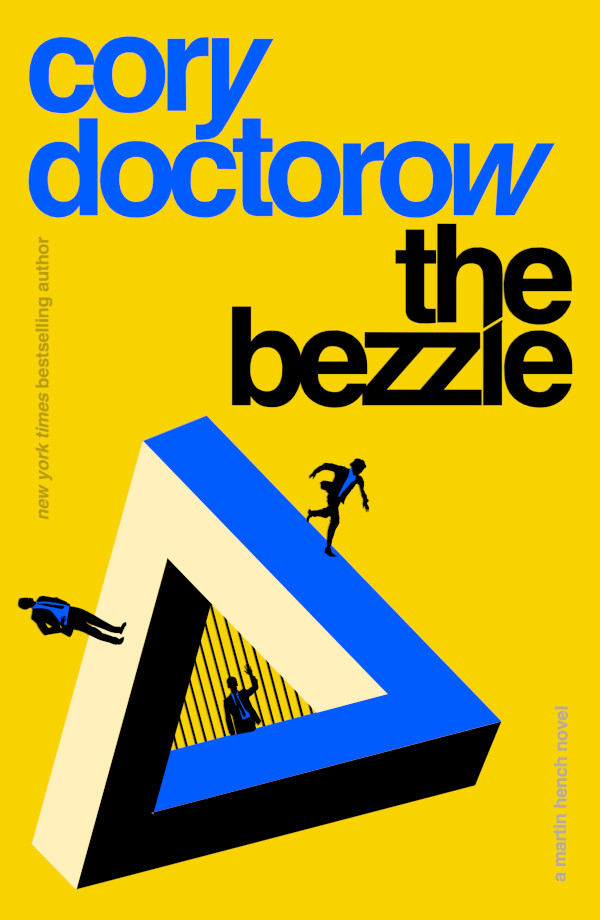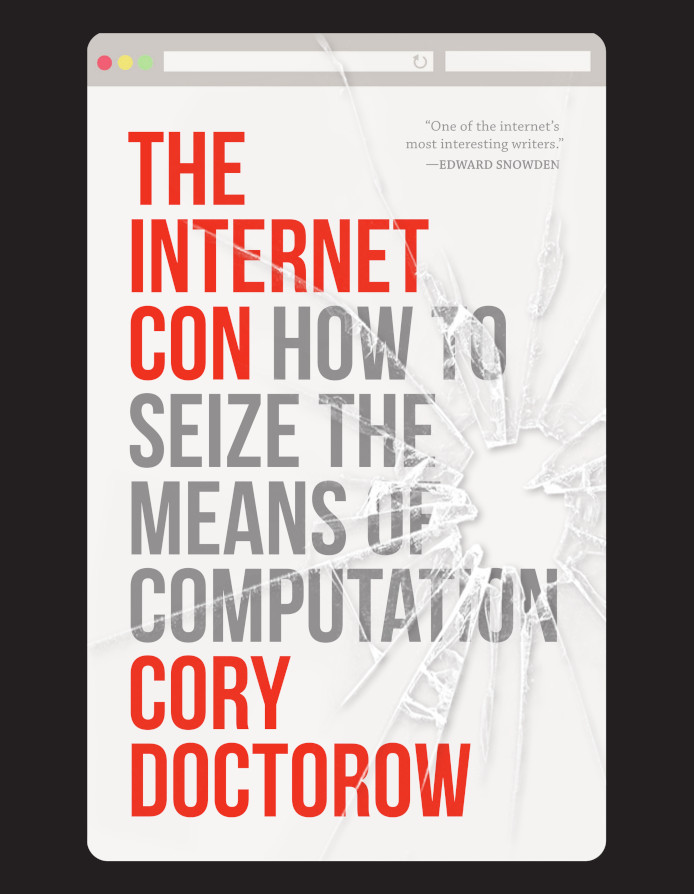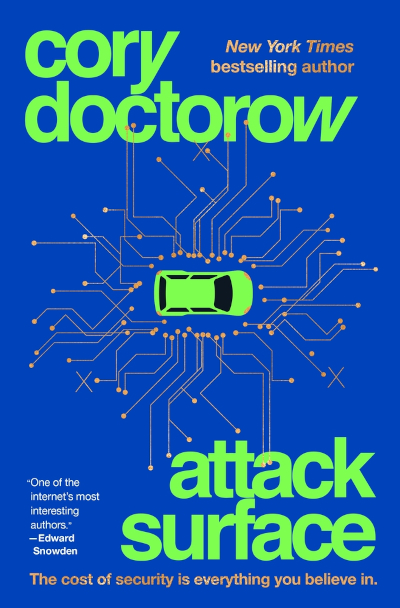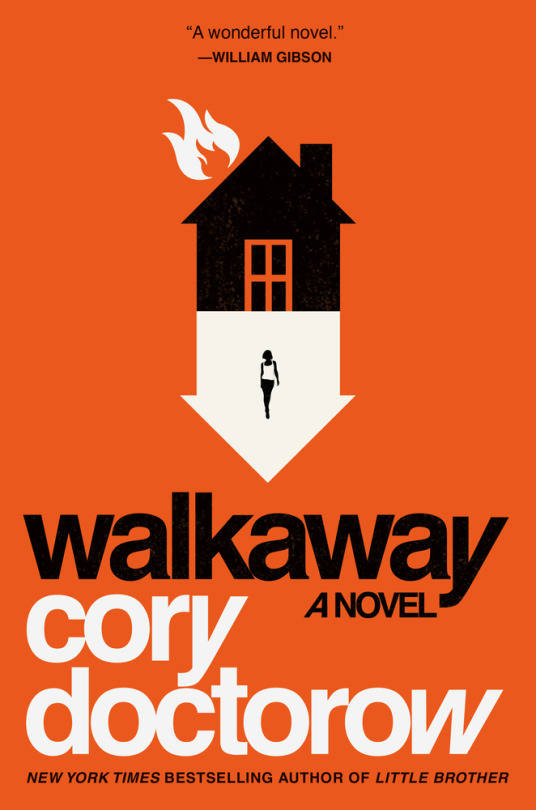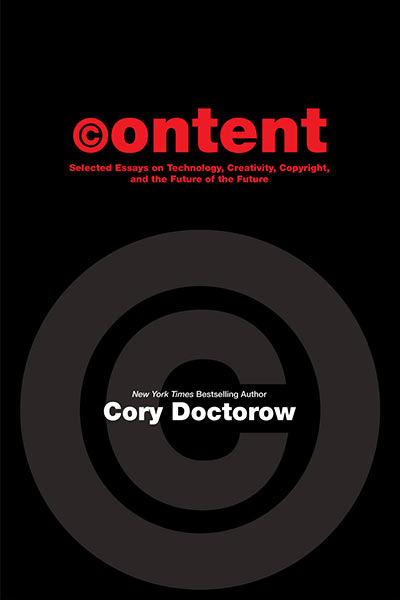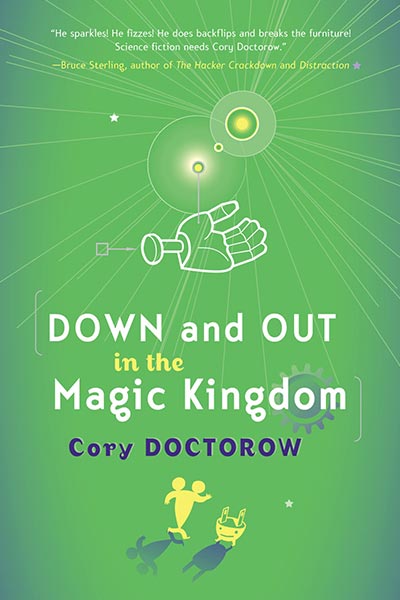SOMEONE COMES TO TOWN, SOMEONE LEAVES TOWN is a glorious book, but there are hundreds of those. It is more. It is a glorious book unlike any book
you’ve ever read.
All About:
Someone Comes to Town, Someone Leaves Town
Publishers Weekly
It’s only natural that Alan, the broadminded hero of Doctorow’s fresh, unconventional SF novel, is willing to help everybody he meets. After all, he’s the product of a mixed marriage (his father is a mountain and his mother is a washing machine), so he knows how much being an outcast can hurt. Alan tries desperately to behave like a human being�or at least like his idealized version of one. He joins a cyber-anarchist’s plot to spread a free wireless Internet through Toronto at the same time he agrees to protect his youngest brothers (members of a set of Russian nesting dolls) from their dead brother who’s now resurrected and bent on revenge. Life gets even more chaotic after he becomes the lover and protector of the girl next door, whom he tries to restrain from periodically cutting off her wings. Doctorow (Eastern Standard Tribe) treats these and other bizarre images and themes with deadpan wit. In this inventive parable about tolerance and acceptance, he demonstrates how memorably the outrageous and the everyday can coexist.
I’m delighted to note that Someone Comes to Town, Someone Leaves Town was selected for Locus Recommended Reading List for 2005 in their best novels category!
A reminder: I’m doing a a reading and signing tomorrow (Monday) night at London’s Stanhope Centre, near Marble Arch, at 6:30PM. Books will be on sale and light refreshments provided. Hope to see you there!
This is such a cool reminx of my novel Someone Comes to Town, Someone Leaves Town — an RSS feed that gives you a couple pages every day. No matter when you subscribe to it, it sends you the book starting from the beginning. Subscribe via Winksite and it’ll come to your phone in daily bite-sized pieces.
(Thanks, Charles!)
I’m giving a signing and reading for my latest book, Someone Comes to Town, Someone Leaves Town, at London’s Stanhope Centre next Monday, Oct 24 at 6PM. There will be copies of all my books on sale, and the kind folks at Stanhope are also providing “light refreshments.” Hope to see you there!
BookSlut
I found Someone Comes to Town to be a great celebration of life and a novel that manages to be downright scary at times while still utterly resplendent with hope. It made me think not only about the true nature of families but also who owns the right to control information in the Internet age.
Georgia Straight
Fantasy trappings notwithstanding, Someone is Doctorow’s most realist novel to date, both his most linear and most peculiar. Its pleasures derive not despite the logical jump-cuts and defiant tangents, but because of them. Not everyone likes Alan in the novel; one character complains, “I had to know the why….From the outside, it’s impossible to tell if you’re winking because you’ve got a secret, or if you’ve got dust in your eye, or if you’re making fun of someone who’s winking, or if you’re trying out a wink to see how it might feel later.” It’s a drive that compels me as well.
SFCrowsnest
This is one of the few books where I feel that everything is as it should be, stylistically and structurally it seems as if the finished product exactly matches the original plan. As with all his other novels you can download it for free from the author’s website, but I urge you to buy it, because the world needs more books like this.


